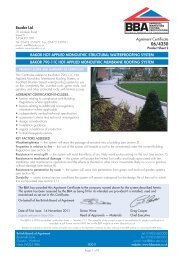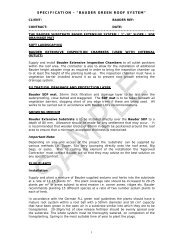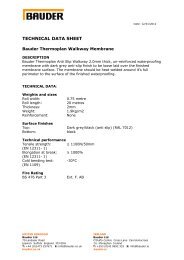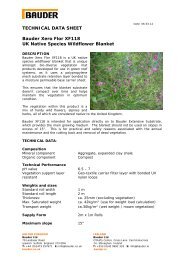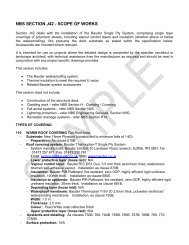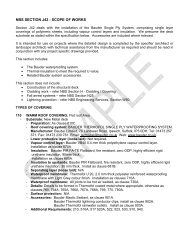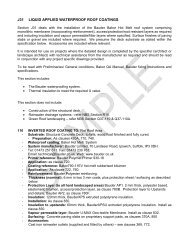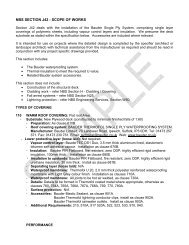The GRO Green Roof Code - SIG Design and Technology
The GRO Green Roof Code - SIG Design and Technology
The GRO Green Roof Code - SIG Design and Technology
Create successful ePaper yourself
Turn your PDF publications into a flip-book with our unique Google optimized e-Paper software.
3<br />
<strong>Design</strong><br />
Considerations & Practical Implications<br />
When designing a green roof, it is important to establish exactly what it is intended to achieve. <strong>The</strong> roof<br />
configuration can vary significantly, depending on the objectives sought from its installation. This section<br />
introduces the different components in a green roof build-up, highlighting their function <strong>and</strong> important<br />
performance characteristics. Key green roof design issues are subsequently introduced.<br />
3.1 Configuration of a <strong>Green</strong> <strong>Roof</strong><br />
All materials used within a green roof system or build-up should, where applicable, have been tested<br />
following the appropriate testing protocols (e.g. FLL, British St<strong>and</strong>ards) <strong>and</strong> deemed to be fit for purpose by<br />
meeting the relevant performance criteria.<br />
A green roof requires appropriate levels of each of the following in order to flourish:<br />
• Sunlight<br />
• Moisture<br />
• Drainage<br />
• Aeration to the plants root systems<br />
• Nutrients<br />
<strong>The</strong> green roof system build-up should be configured to provide the requisite balance of the above<br />
requirements, including at least some of the following components:<br />
3.1.1 Root resistant material<br />
A membrane that permanently protects the roof’s waterproof covering by preventing plant roots or rhizomes<br />
from growing into or through it. Can take the form of an independent membrane or a monolithic rootresistant<br />
version of a waterproofing membrane. <strong>The</strong> root resistant element may be a chemical or a physical<br />
barrier (tested in accordance with FLL 2008, Section 7.1.2.5 or EN 13948).<br />
<strong>The</strong> important performance characteristics to evaluate suitability are:<br />
• Density (kg/m3)<br />
• Tensile strength (N/mm²)<br />
• Elongation to break (%)<br />
3.1.2 Moisture retention/protection layer<br />
A geotextile blanket, available in varying thicknesses (typically between 2-12 mm), performs a dual function.<br />
Firstly, protecting the waterproof membrane during the installation of the green roof system; <strong>and</strong> secondly,<br />
increasing the water holding capacity of the green roof system.<br />
<strong>The</strong> important performance characteristics to evaluate suitability are:<br />
• Water storage capacity (l/m²)<br />
• Thickness (mm)<br />
• Weight [dry] (kg/m²)<br />
• Tensile strength (kN/m²)<br />
3.1.3 Drainage/Reservoir layer<br />
Available in a variety of materials, including hard plastic, polystyrene, foam, coarse gravel <strong>and</strong> crushed<br />
recycled brick, depending on the functional requirements. Allows excess water to drain away, thereby<br />
preventing the water logging of the substrate. Some drainage layers also incorporate water storage cells to<br />
retain additional water that can be diffused to the plant support layer during prolonged dry periods.




